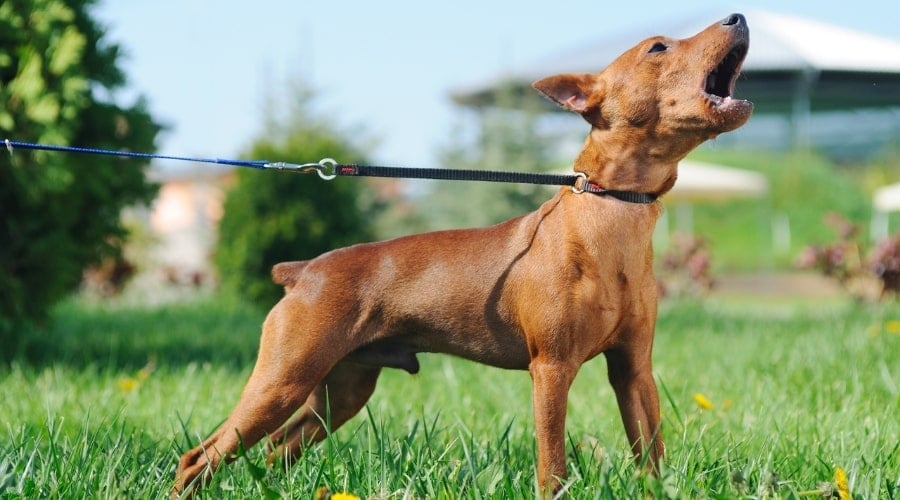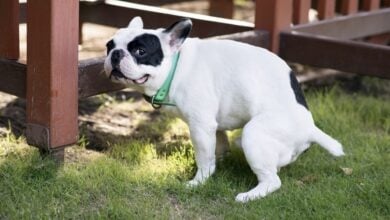What Smells Do Dogs Hate Most? These 10 Might Be In Your Home
When you purchase through links on our site, we may earn a commission. Here’s how it works.
What smells do dogs hate? It’s a question I never really thought about until I started walking Falkor, my Poodle Beagle mix.
Table of Contents
Taking him out is like escorting a four-legged crime scene investigator through the neighborhood. Every bush, every rock, every suspicious patch of grass must be thoroughly sniffed and analyzed. If there’s a scent, he wants the full story: who was here, what they were doing, and whether they had snacks.
Most of the time, he’s thrilled by what he finds. He’ll practically bury his face in the dirt with joy. But every now and then, something makes him stop mid-sniff, recoil in horror, and look at me like I’ve committed a crime against his nostrils.
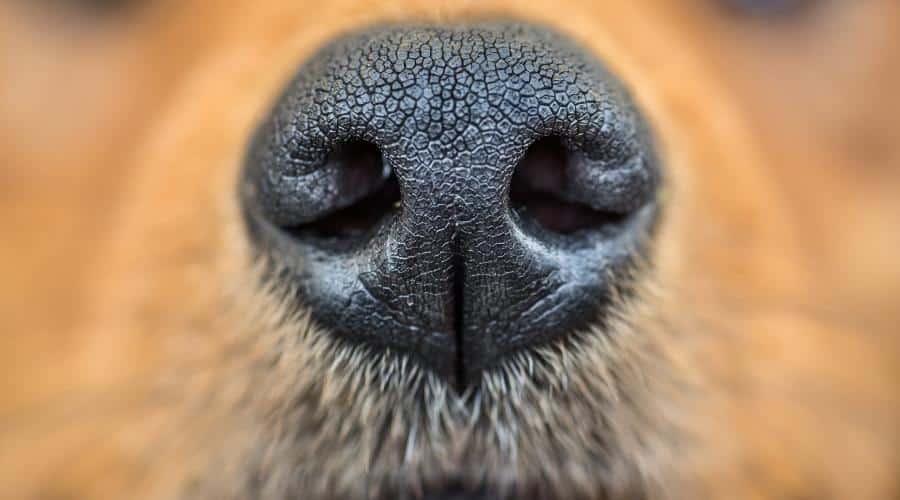
And that’s when I started asking the real questions. If dogs live for smells… what could possibly be so offensive that it sends them running?
Grab your metaphorical gas mask. We’re about to uncover the scents that even the proudest sniffers can’t stand.
How Powerful Is a Dog’s Sense of Smell?
If you’ve ever questioned why your dog sniffs everything like it holds ancient secrets, here’s why: their sense of smell isn’t just stronger than ours, it’s in a whole different league.
- While we humans have around six million scent receptors, dogs have between 100 and 300 million, depending on the breed.
- Their noses are estimated to be up to 40 times more powerful than ours. What smells faint or forgettable to us might be screaming at your dog. They can even detect scents from more than 12 miles away.
- About 40% of a dog’s brain is devoted to analyzing scent, compared to just 5% in humans. Their brains are literally built to sniff first, ask questions later.
That’s why they’re pros at detecting bombs, locating lost hikers, identifying diseases, and yes, finding that slice of pepperoni you dropped two days ago under the couch.
Trained dogs can detect diseases like COVID-19, cancer, malaria, and even Clostridioides difficile with astonishing accuracy, sometimes matching or exceeding the sensitivity of medical tests. Their noses can pick up volatile organic compounds released by the body long before symptoms appear.
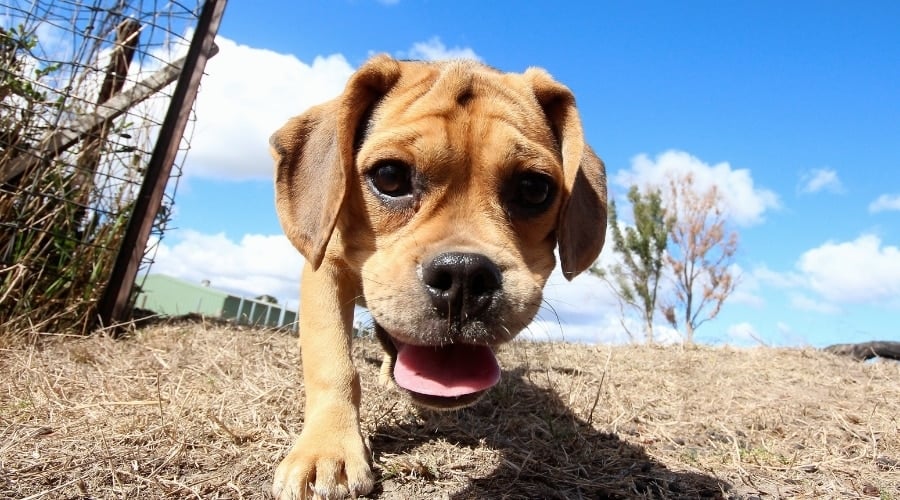
But this super-sensitivity comes at a cost. If a smell is bad, it’s really bad. Not just “ew” bad. More like “I’m leaving the room and never coming back,” bad.
So, what kinds of smells hit the canine nose the wrong way? Let’s take a look at the scents most likely to send your dog running.
What Smells Do Dogs Hate? 10 Scents That Send Them Running
While dogs might adore the smell of muddy puddles and other things we’d rather not name, there are certain scents that absolutely send them packing. Some are just annoying to their ultra-sensitive noses, while others trigger a full-on retreat.
It turns out that some of the very smells we associate with cleanliness, comfort, or even luxury are exactly the smells dogs hate most.
Whether you’re trying to keep your dog out of the trash or just wondering why they sprint out of the room during your cleaning routine, these are the smells that top their “no thank you” list.
1. Chemical Smells: Instant “Nope” for Your Dog’s Nose
If your dog could write Yelp reviews, chemical smells would get zero stars. Not even a courtesy sniff. Whether it’s bleach, paint fumes, or nail polish remover, dogs react to strong synthetic odors the same way you’d react to being hit in the face with a foghorn made of hot garbage.
And honestly, can you blame them?
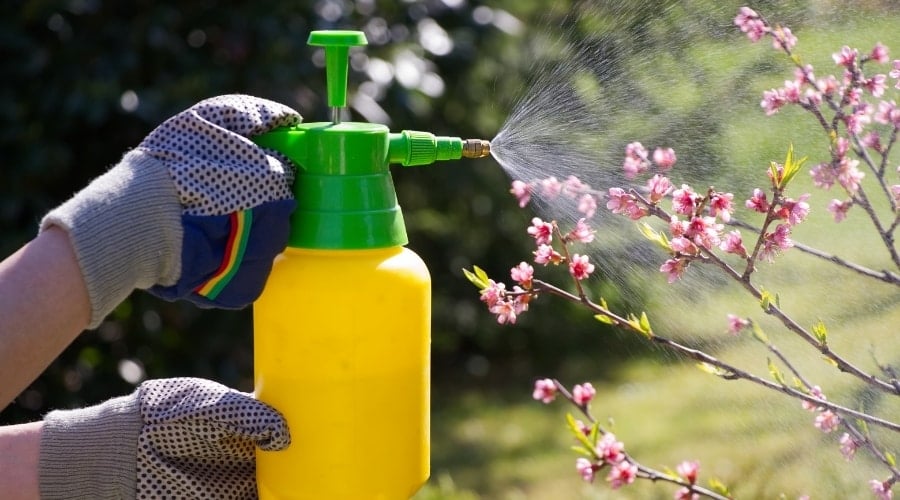
Dogs’ noses are working overtime. While you’re thinking “ugh, this nail polish smells strong,” your dog is experiencing it as an air assault of eye-watering intensity. These smells don’t just bother dogs; they can overwhelm and even harm them.
5 Common Chemical Offenders Dogs Hate:
- Beauty products like nail polish, remover, hair dye, and hairspray
- Paint fumes, from wall touch-ups to craft projects
- Car fluids such as antifreeze, gasoline, and brake cleaner
- Glues and solvents from DIY kits or school projects
- Yard chemicals like weed killers and plant food
Your dog may flee the room, sneeze, paw at their face, or give you a look of personal betrayal. All valid responses.
Safety note: Products containing phenols, formaldehyde, or ethanol can be dangerous to dogs, even in small doses. Ventilation is a must, and keep paws off any freshly cleaned or painted surface.
My Personal Experience: Falkor vs My Manicure
Last time I painted my nails, Falkor acted like I’d set off a stink bomb. One sniff, and he bolted down the hallway like I’d wronged him on a spiritual level. He didn’t return until bedtime, and even then, he made sure to sleep on the far edge of the couch.
Now I make sure I do my nail painting in the bathroom, door closed, and the fan on high. Even then, Falkor won’t come near me until that chemical scent is long gone.
2. Cleaning Products: “Clean” Is a Relative Term
That bleach fresh scent you love? Your dog thinks it smells like danger. Most cleaning products are full of strong, synthetic fragrances, not to mention chemicals, that your dog’s super nose can’t handle.
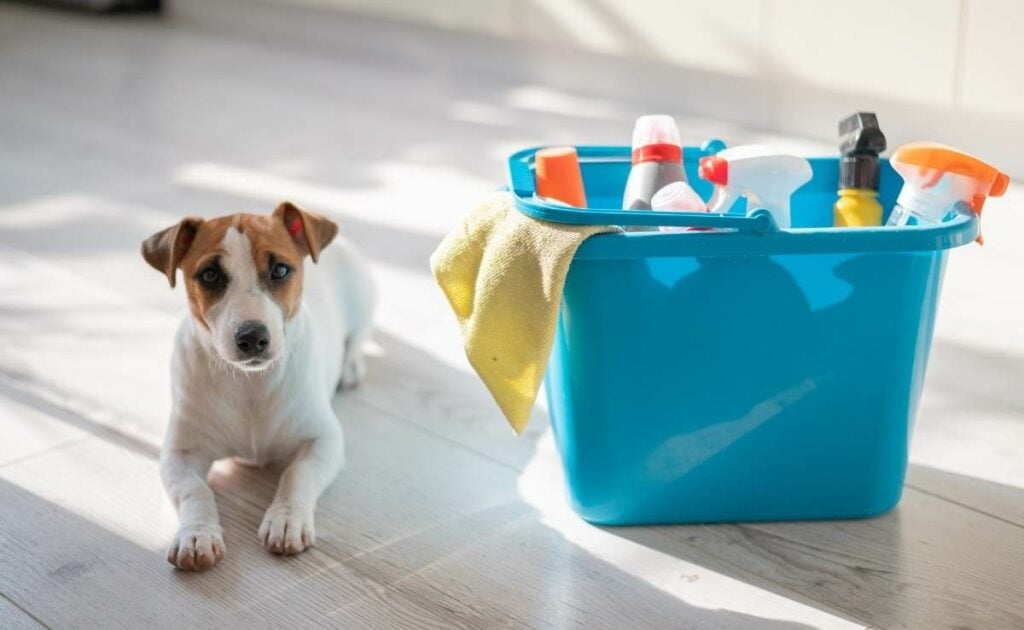
Even if it’s labeled “pet-safe,” the scent alone might be overwhelming. Many dogs bolt the second the mop comes out.
Common Culprits:
- Bleach
- Ammonia
- Disinfectant sprays and wipes
- Scented floor or carpet cleaners
- Anything with “mountain breeze” in the name
Safety note: Always let floors and surfaces dry before your dog walks on them. Inhaling fumes or licking treated areas can lead to irritation or worse.
My Personal Experience: Daisy and the Mop of Doom
I once mopped the kitchen floor with a lemon-scented bleach cleaner, and my senior dog Daisy walked in right as I was finishing up. She sniffed, made a face like she’d stepped in something foul, and reversed out of the room so fast she slipped on the tile. She didn’t go near that kitchen for two days, which honestly made it feel like I had finally found her off switch.
3. Citrus: Zesty to You, Off-Putting to Them
A tall, fresh glass of orange juice or lemonade is a perfect way to start your morning, but don’t expect your pup to appreciate that citrusy scent.
The bright, tangy smell of lemons, oranges, limes, or grapefruit is a total turnoff to most dogs. It’s sharp, acidic, and deeply unpleasant to their ultra-sensitive noses.
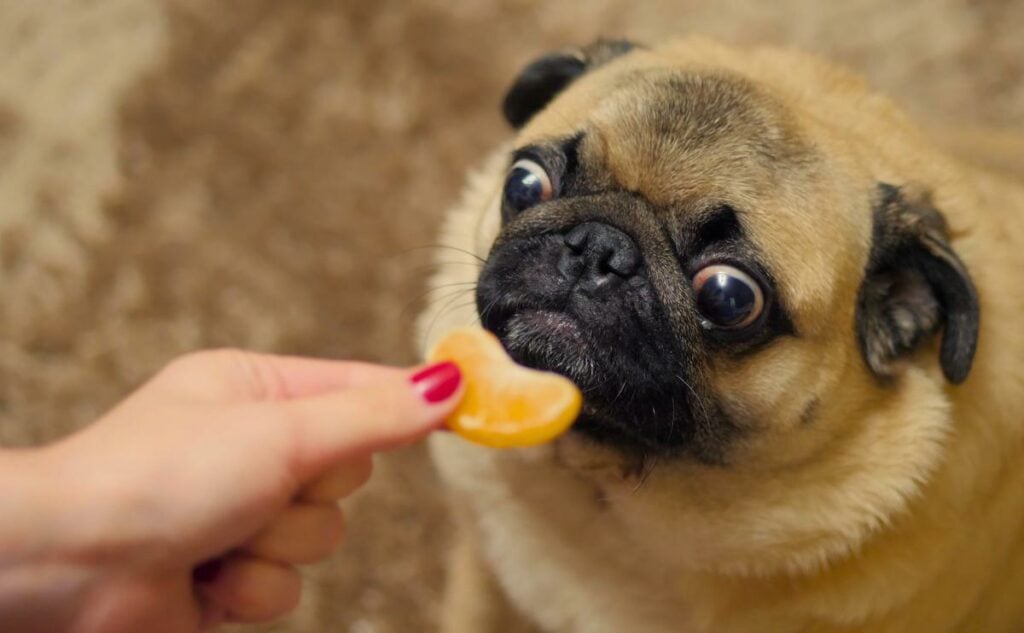
Why dogs hate it: Citrus oils contain compounds that dogs find too intense. It’s the scent equivalent of walking into a room filled with flashing lights and blaring alarms.
Dogs can eat very small amounts of oranges, but citrus is usually not a big part of their diet. While the flesh of some citrus is ok, the pith, peels, and seeds can be dangerous. Citric acid can cause stomach issues, including diarrhea and vomiting, and is harmful in high amounts.
Safety note: While citrus peels are mostly harmless, concentrated citrus oils can cause skin irritation or toxicity if ingested. Use sparingly around pets.
4. Vinegar: One Sniff and They’re Gone
Vinegar is the MVP of natural cleaning, but to dogs, it smells like betrayal. That sharp, acidic tang is enough to make them regret ever entering the kitchen.
Why dogs hate it: The acetic acid in vinegar overwhelms their olfactory system. It’s like standing in a cloud of nose needles.

Safety note: Vinegar isn’t toxic, but the smell alone can stress your dog out. Use it when needed, but don’t expect them to hang around while you’re wiping down the counters.
My Personal Experience: Falkor’s Vinegar Vendetta
Falkor once walked into a room where I had just sprayed with a vinegar solution to clean a spot on the carpet. He stopped mid-stride, did a dramatic U-turn, and left like he had more important things to do. Once the smell faded, a few hours later, he came back, but gave me the stink eye for the rest of the day.
5. Spicy Peppers: Too Hot to Handle
Dogs are not built for spice. Anything with chili powder, cayenne, jalapeños, or hot sauce is a giant red flag for their snouts.
Why dogs hate it: The capsaicin that gives peppers their heat is a major irritant for dogs. It doesn’t just smell bad, it stings. If you’ve ever sliced up a spicy pepper and then touched your nose or eyes, you may have an idea of how your pup might feel.

Studies show dogs may feel this pain more intensely than humans, with reactions like sneezing, pawing at the face, drooling, and nasal irritation. Wildlife research confirms that most animals instinctively avoid capsaicin because of its pungent nature.
Safety note: Never use spicy substances to deter dogs from chewing or digging. It may seem clever, but it can cause inflammation and pain. There are far better, safer alternatives.
My Personal Experience: Falkor and the Spicy Sneezes
I dropped a teeny bit of cayenne powder on the floor while cooking. Falkor trotted over, sniffed it, and immediately launched into what can only be described as a sneeze explosion. Seven sneezes. Full body. He then rubbed his face into the rug like he was trying to scrub the memory from existence. Thankfully, we’ve never had a repeat experience.
6. Herbs and Spices: Not All Are Sniff-Worthy
Your spice rack may smell like a warm fall afternoon, but to your dog, it’s a wall of olfactory chaos. Strong herbs like cinnamon, cloves, mustard seed, and rosemary are frequently on their “hard pass” list.

Examples of strong-smelling herbs dogs often avoid:
- Cinnamon
- Mustard
- Clove
- Thyme
- Rosemary
Safety note: Most of these herbs aren’t toxic in small quantities, but the scent alone is often enough to keep curious noses away. Garlic, on the other hand, smells great but is highly toxic to dogs.
7. Alcohol: Sharp, Strong, and Unwelcome
Dogs have an excellent danger radar, and alcohol sets it off immediately. Rubbing alcohol, hand sanitizer, mouthwash, spilled cocktails, one whiff, and your dog wants no part of it.
Why dogs hate it: Alcohol fumes are overpowering. They sting the nose and can be physically irritating. Dogs instinctively avoid it.
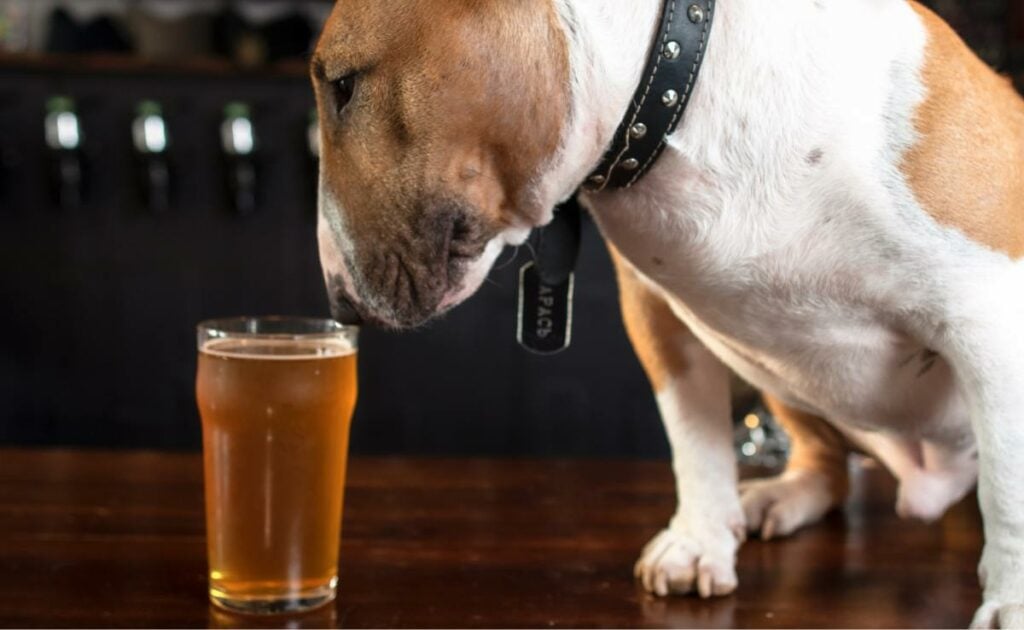
Even small amounts of alcohol, like spilled wine or alcohol-based cleaning sprays, can irritate a dog’s mucous membranes and may lead to vomiting, disorientation, or worse if ingested.
Safety note: Alcohol is toxic to dogs. Don’t use alcohol-based products on surfaces your dog licks or walks on. And let hand sanitizer dry before petting them.
8. Essential Oils: Natural Doesn’t Mean Nice
We love essential oils for stress relief and ambiance, but for dogs, they can be overwhelming or even harmful. Even “gentle” oils like lavender or peppermint can make dogs cringe. While we might find the scents relaxing, they’re among the top smells dogs hate and often avoid.

Scents dogs commonly dislike:
- Lavender
- Eucalyptus
- Peppermint
- Tea tree
- Citrus oils
Safety note: Some essential oils are toxic if licked or absorbed. Don’t apply oils to your dog or diffuse them in enclosed areas where they can’t escape.
My Personal Experience: Daisy’s Peppermint Protest
I fired up a peppermint diffuser in the living room around the winter holidays to set a festive mood before a family gathering. Daisy stepped in, squinted, took a deep sniff, and walked away like she had an important meeting elsewhere. She ended up under my office desk for three hours. Suffice it to say that the diffuser was a one-time experiment.
9. Perfume and Cologne: Fancy for You, Funky to Them
A little spritz before heading out might make you feel confident, but to your dog, it smells like you walked through a synthetic scent storm.
Why dogs hate it: Perfumes and colognes are loaded with artificial fragrances that cling to clothes, skin, and fur. Even one spray can linger for hours and overwhelm your dog’s senses.

Artificial fragrances in some dog shampoos can irritate sensitive skin and overwhelm a dog’s powerful sense of smell, making bath time stressful instead of soothing. Look for unscented or naturally scented formulas labeled safe for pets.
Safety tip: Try applying perfume away from your dog, and give it a few minutes to settle before snuggle time.
Personal Experience: Falkor Hates Fancy
Before heading out for a date night, I spritzed on a bit of perfume. Falkor, normally my shadow, refused to come within five feet of me. I bent down to say goodbye, and he actually sighed and turned his head.
Not a bark. Not a kiss. Just silent judgment and emotional distance. Apparently, the aromatics of my favorite flower scent are not his love language.
10. Mothballs: The Ultimate Dealbreaker
This one’s not just hated, it’s downright dangerous. Mothballs release a potent vapor designed to kill insects, and dogs know instinctively to stay away.
Why dogs hate it: The intense chemical smell triggers every “do not approach” signal their nose has. To them, it smells like poison… because it is.
Safety rule: Mothballs are toxic. Never use them as a dog deterrent. Even sniffing them too long is risky; swallowing them can be fatal.
Why Knowing What Smells Dogs Hate Actually Matters
Dogs don’t just notice smells, they live in them. Their noses are so sensitive that what seems like a mild scent to us can feel like sensory overload to them. That plug-in air freshener? Your dog might interpret it as a flashing red warning.
Dogs experience the world through scent. It’s how they recognize their people, track squirrels, and make sense of their territory. So when the air is filled with harsh chemicals, artificial fragrances, or essential oils that read as “wrong,” it can stress them out or even make them feel unsafe.
Some smells just annoy them. Others? They’re a red-alert, nose-burning, full-body recoil.
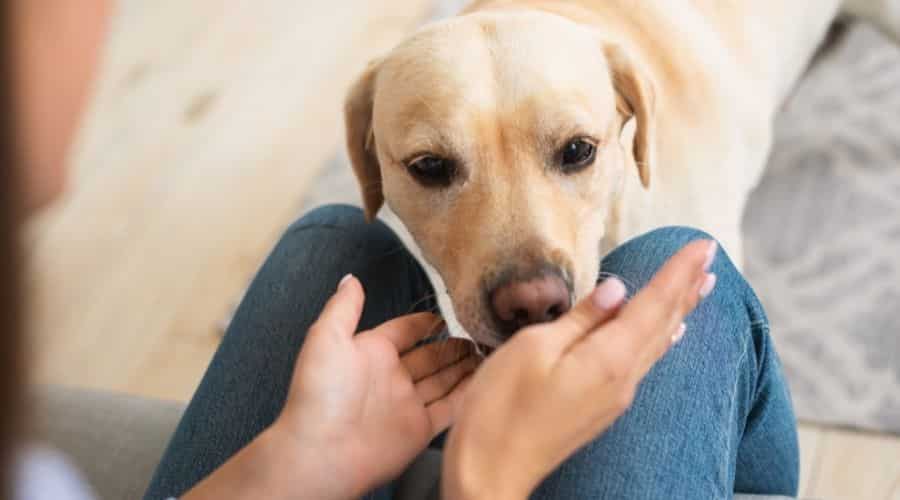
Want to avoid triggering a tail tuck or unexpected meltdown in the laundry room? Here’s how to keep your home (and your dog’s nose) in a safer, calmer state:
7 Simple Ways to Keep Your Dog Safe From Offensive Smells
- Clean smarter, not stronger. Open windows when you clean. Use unscented or low-odor products labeled pet-safe. Skip the heavy-duty lemon-scented mop if your dog’s already acting twitchy near the kitchen.
- Keep the spa stuff out of your dog’s space. Essential oils like tea tree, peppermint, and citrus may smell calm to you, but they scream “get out” to your dog. Diffuse in a separate room or skip it entirely if your dog disappears every time you plug it in.
- Go easy on perfumes, sprays, and candles. Your signature scent may be masking your dog’s will to live. Apply sprays away from their favorite nap spots and avoid scented candles in small, closed spaces.
- Store the toxic stuff like it’s toxic. Mothballs, antifreeze, glue, and paint should never be within sniffing distance. The smell alone can be harmful, let alone what happens if your dog gets curious.
- Use pet-safe alternatives. Choose unscented or mild products designed for use around pets whenever possible
- Rinse and wipe paws after chemical exposure. If you’ve walked your dog in an area recently sprayed with pesticides or lawn treatments, give those paws a quick clean. What they smell, they often lick later.
- Read the signs. If your dog sniffs something and immediately backs away, starts sneezing, or leaves the room entirely, don’t ignore it. That’s their nose saying, “Hard pass.”
It doesn’t take much to keep your dog’s environment sniff-friendly. You don’t have to throw out every candle or go full fragrance-free; you just need to be aware of what sends their nose into panic mode. Their nose is their superpower. Respect it, and your home becomes a whole lot more peaceful.
Fun Fact: Dogs Can Literally Smell Your Emotions
Dogs can literally smell when you’re stressed. A study at the University of Bristol in partnership with Cardiff University and the British charity Medical Detection Dogs showed that when dogs sniffed the sweat and breath of stressed humans, they became more cautious, often avoiding scenarios they normally wouldn’t.
That scent gap influences both their behavior and their mood. Dogs’ super-sensitive noses pick up on emotional cues we don’t even realize we’re giving off. We cover this more in this guide about dogs sensing when we are sad and how dogs smell fear.
What Smells Do Dogs Hate to Pee On?
Not all smells make dogs flee the room. Some simply shut down their urge to mark. While many scents overwhelm dogs in general, a few are particularly effective at stopping them from lifting a leg where they shouldn’t.
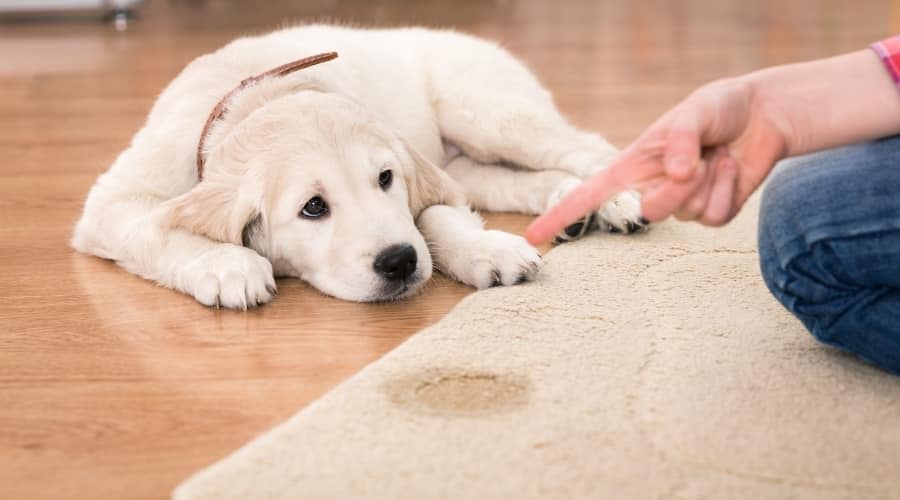
Here are some of the most common smells that discourage dogs from peeing:
- Citrus: Lemon and orange peels are natural deterrents. The sharp, acidic scent makes the area feel off-limits. Citrus-scented cleaners can sometimes help too, as long as they’re safe for pets.
- Vinegar: This is a go-to ingredient in homemade dog deterrent sprays. The sour smell is strong enough to mask any previous pee scent, which helps break the marking habit.
- Rubbing alcohol: The sharp, sterile odor is unpleasant to dogs and doesn’t invite territorial marking. However, it should never be sprayed where a dog might closely sniff or lick.
- Strong cleaning products: Anything with a strong artificial scent can make a space feel unnatural or “unmarkable” to a dog. It doesn’t smell like part of their territory, so they’re less likely to treat it like one.
If your dog keeps marking in the same indoor spot, a citrus or diluted vinegar solution may help discourage them. Always test a small area first and avoid using anything too harsh near their food, water, or bedding.
For outdoor trouble zones, placing citrus peels around problem areas may help. Every dog is different, so it might take a little experimentation to find what works best. When house training, a potty training spray can be very helpful in pointing your dog in the right direction and away from your carpets.
6 Things Dogs Hate That Aren’t Smells
Scent plays a huge role in how dogs experience the world, but it’s not the only thing that can push their buttons. Sometimes, the things they dislike most have nothing to do with their noses at all.

Here are a few non-smelly things many dogs strongly dislike:
- Loud noises: Thunder, fireworks, vacuums, blenders, and hair dryers can trigger anxiety or fear. Sudden or booming sounds often make dogs feel unsafe.
- Being stared at: Long or direct eye contact can feel intimidating. Dogs often interpret it as a challenge or threat, especially if they’re nervous or unsure.
- Costumes or clothing: While some dogs tolerate a sweater or raincoat, many dislike the sensation of wearing anything on their body. Hats, in particular, are often met with suspicion.
- Surprise touches: Startling a sleeping dog or touching them unexpectedly can lead to alarm or defensive behavior. Like people, dogs prefer to know when someone’s entering their personal space.
- Changes in routine: Dogs thrive on predictability. Changes in schedule, feeding times, or household dynamics can cause stress or behavioral shifts.
- Wind or fans blowing in their face: Some dogs dislike the sensation of constant airflow. It can feel overstimulating or even disorienting, especially in confined spaces.
Every dog is different, but understanding their sensitivities helps build trust and reduce unnecessary stress. Paying attention to what they avoid or react strongly to can make your home feel a lot more comfortable from their perspective.
Respect the Nose, Respect the Dog
Your dog doesn’t need words to tell you what they like or hate, especially when it comes to smells. Their nose is constantly working, mapping the world in ways we can’t even imagine.
So when they back away from your new cleaner or avoid the hallway you just sprayed with room freshener, they’re not being dramatic. They’re doing exactly what nature designed them to do: protect themselves.
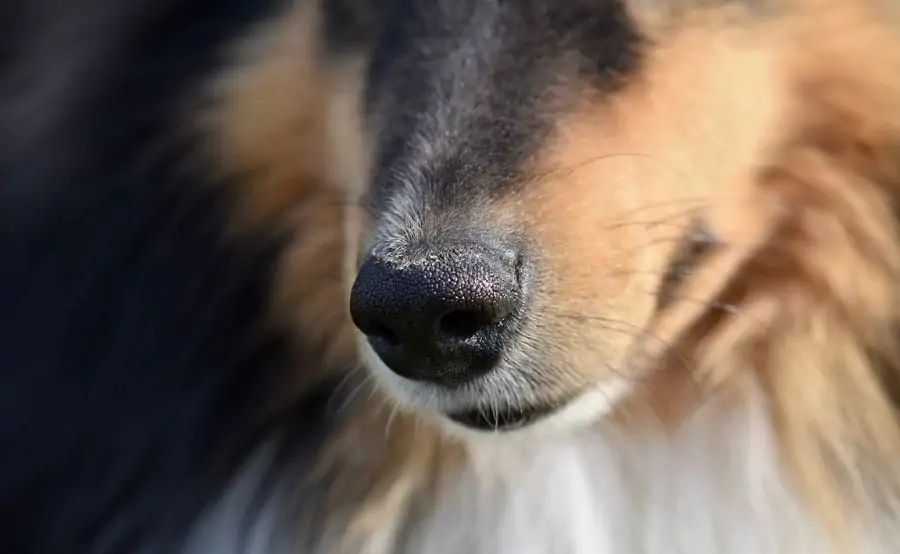
Understanding what smells dogs hate isn’t about coddling your pup; it’s about making your home a place where they feel calm, safe, and at ease. For me, that means letting Falkor veto vinegar-based sprays and keeping Daisy’s favorite blanket far from the diffuser. If that’s the price for peace and happy naps? I’ll pay it gladly.
Keeping Your Dog’s Nose Healthy
Your dog’s nose isn’t just cute, it’s their primary tool for navigating the world. From sniffing out snacks to reading the emotional temperature of a room, their sense of smell plays a huge role in how they experience life. That’s why keeping their nose healthy isn’t just about comfort. It’s about protecting one of their most important senses.
To help, avoid using harsh cleaning products, air fresheners, or heavily scented dog shampoos around your pet. These can irritate their sensitive nasal tissue or overwhelm their sniffing superpower. If your dog’s nose seems dry or cracked, a vet-approved balm can help keep it moisturized and comfortable.
Also, pay attention to changes. If your dog’s nose becomes excessively dry, itchy, crusty, or starts bleeding, it’s time to check in with your vet. And don’t forget the fun part: give them time to sniff on walks. It’s more than a quirky habit. It’s how they explore, think, and stay mentally sharp.
The video below shares how a long line leash can be perfect for sniff walks with your pup.
Have You Noticed a Smell Your Dog Can’t Stand?
Some dogs hate lemon. Others act like the vacuum sprayed them with cologne. Falkor once staged a silent protest under the couch because I lit my favorite eucalyptus candle. Daisy gives my mop the side-eye like it owes her money. If your dog has a smell they absolutely can’t stand, we want to hear about it.
Drop your funniest or weirdest scent-related dog stories in the comments; we’re sniffing out all the canine drama. Your experience might just help another dog parent avoid a peppermint-scented meltdown.
